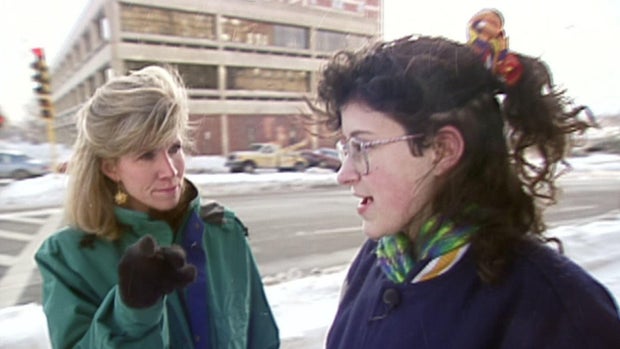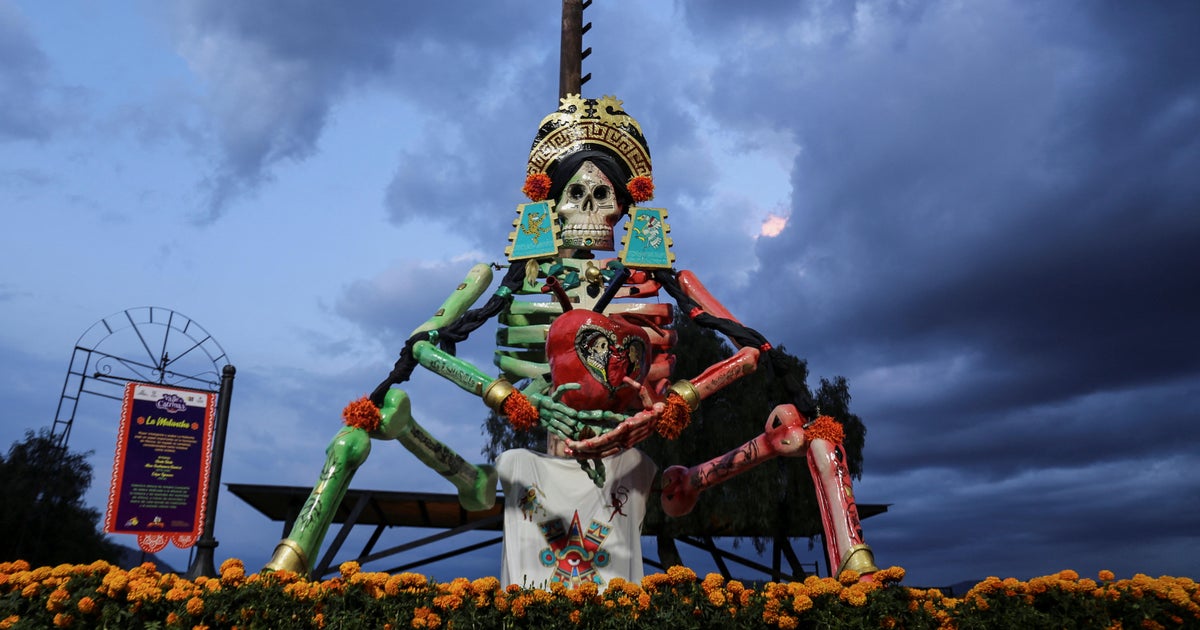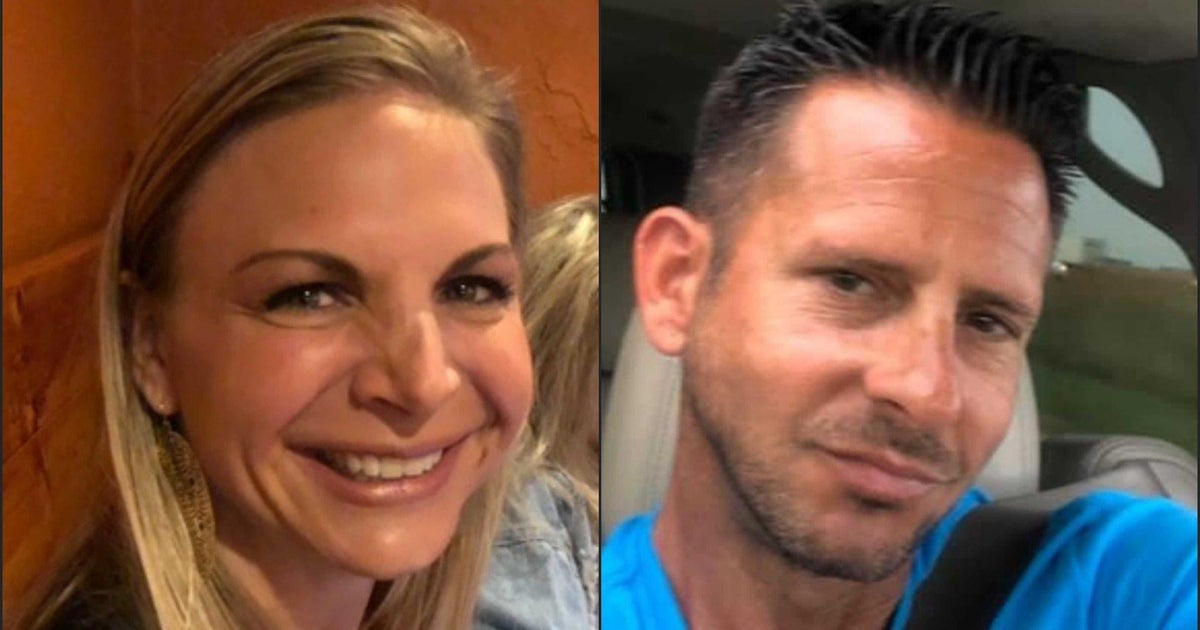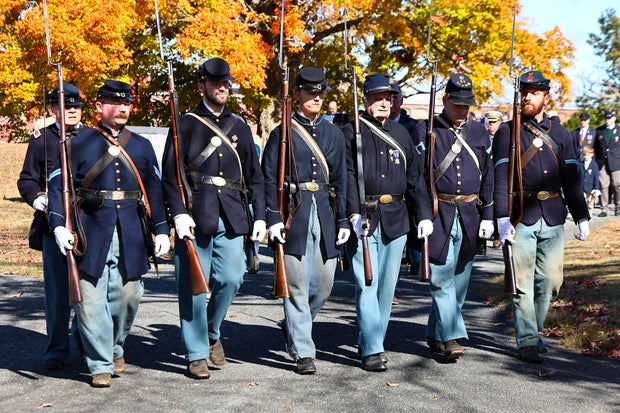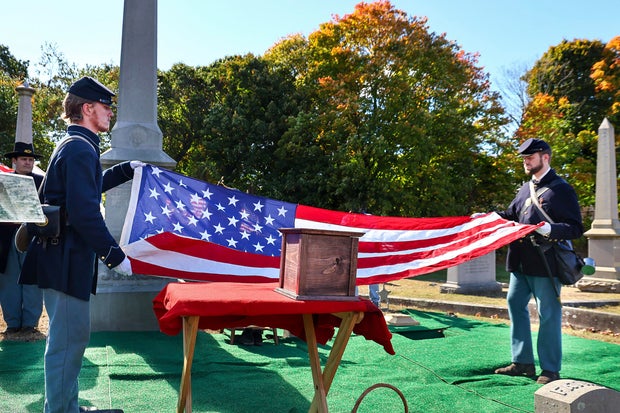CBS News
How a 12-year-old Massachusetts girl who escaped a serial killer likely saved the lives of others

Jan. 7, 1994, started out like any other typical winter morning for Rebecca “Becky” Savarese of Pittsfield, Massachusetts. There was snow on the ground, and it was bitterly cold as the 12-year-old walked to school. Then, at around 7:10 a.m., at one of the busiest intersections in town, a man came up beside her. “He had a mustache, but he didn’t shave. He seemed like a nerd to me,” said Savarese. The stranger quickly pulled out a gun and held it up against her.
Becky said the gunman threatened her: “Just do everything I say, everything will be perfectly OK.” Then he steered her toward his truck and told her to get in. But Becky refused. “I didn’t care if he shot me. I just knew I was not going to get into that truck,” she told “48 Hours.”
CBS News
Instead, that’s when Becky said she came up with an idea that possibly saved her life. She faked an asthma attack. She explained, “I was like, ‘Can I sit down? Can I just sit down a minute?’ I was trying to take my backpack off … and he tried to grab me, and he got my backpack and then I just started to run.”
The gunman jumped into his truck and sped off. Becky ran into a man clearing snow off a sidewalk who called police. At about the same time, a witness called in with three digits from the truck’s license plate.
Police learned that a 43-year-old handyman and former movie theater janitor named Lewis Lent had been driving that truck. He at first denied knowing about Becky Savarese, but he later confessed to trying to abduct her.
When police searched Lent’s truck they found disturbing evidence. New York State Police Detective Reece Treen said they found “Rebecca’s backpack. They found a gun. They found what Lou called his ‘snatch kit.’ Duct tape and a clothesline rope. Basically, his kidnapping abducting kit he had with him.”
After Lent was arrested for the attempted abduction of Becky Savarese, authorities wondered if Lent could have abducted other children — including a 12-year-old-girl who had disappeared five months earlier. Sara Anne Wood, from Sauquoit, New York — 100 miles from Pittsfield — was last seen on her bike, leaving church as she was headed home less than a mile down the street.
New York State Police
When authorities questioned Lent about Sara’s disappearance, he eventually confessed, in horrific detail, that he abducted, sexually assaulted and killed Sara. He also admitted to kidnapping and murdering 12-year-old Jimmy Bernardo from Pittsfield.
Hunters had found Jimmy’s body in a rural and isolated area 200 miles away from Pittsfield. But detectives had no idea where Sara was buried. When they asked Lent, authorities say he continuously lied as to where he buried her.
The search for Sara and the cat-and-mouse game between authorities and her killer to get him to reveal where her remains are located is the focus of “The Unending Search for Sara Anne Wood.” Correspondent Erin Moriarty reports in the season premiere of “48 Hours,” airing Saturday, Sept. 21 at 10/9c on CBS and streams on Paramount+.
Authorities credit Becky for breaking Sara’s abduction case wide open. New York State Police Detective Frank Lawrence said, “She’s the key, she’s the linchpin. She’s what made it all happen … She got away … That’s what put us on to Lewis Lent.”
Treen, who spent many long hours interviewing Lent in prison, said that Lent admitted he would often drive for many miles hunting for children to kidnap. “(Lent) had a large hunting area. He mentioned that if he had money and he had the gas, that’s what he would do … he would go out looking for vulnerable children.”
New York State Police
But Becky Savarese’s bravery and quick thinking changed all of that. In 1995, Lent was convicted for her attempted kidnapping and was sentenced to 17 to 20 years in prison. In 1996, after taking a plea, he was given a life sentence for murdering Jimmy Bernardo. Then, later that year, Lent pleaded guilty to killing Sara Wood. In 1997, he was sentenced to 25 years to life for her murder. Lent will serve the rest of his life in prison. Sara’s brother Dusty Wood said, “He (Lewis Lent) will never cause harm to anyone else.”
Herkimer County District Attorney Jeffrey Carpenter often wonders what would have happened if Becky had not been able to escape. “I think Becky Savarese not only saved herself, she saved countless children because this man (Lewis Lent) was developing his skills. He was getting better at it. She outsmarted him … and brought an end to his reign of terror,” he told “48 Hours.”
Back in 1994, Becky’s mother, Chris, told “48 Hours” that she often lectured her daughter about the steps to take in case she was ever abducted: to “kick, punch, bite, spit and do anything to get away.” Becky had also been warned about strangers from a policeman who came to her school the year before the incident.
Dusty Wood says Becky’s actions are an example as to why educating youth about abduction prevention is so important. “If no one had said anything to Rebecca … she would have had a different outcome.”.
Every year, Dusty Wood and some family members participate in the “Ride for Missing Children,” a 78-mile bike ride that was created in Sara’s honor by their father Bob Wood. Riders stop at schools along the route to talk to children about how to stay safe. Riders also pay silent tribute to those children who are missing and never coming home and those that they hope may be found alive.
Dusty Wood says he cannot do anything to bring his sister Sara back, but he can try and make positive change by educating the public about how to keep children safe. He told “48 Hours,” “The most important thing for us as a family is to protect kids … and make sure that if there’s anything that can be done to protect them from monsters like Lewis Lent, that it be done.”
To learn more about how to educate children about abduction prevention, please visit the National Center for Missing and Exploited Children website missingkids.org.
CBS News
2 shot dead, 4 wounded by Mexico’s National Guard on migrant smuggling route near U.S. border

Mexico’s National Guard fatally shot two Colombians and wounded four others in what the Defense Department claimed was a confrontation near the U.S. border.
Colombia’s foreign ministry said in a statement Sunday that all of the victims were migrants who had been “caught in the crossfire.” It identified the dead as a 20-year-old man and a 37-year-old woman, and gave the number of Colombians wounded as five, not four. There was no immediate explanation for the discrepancy. The victims were identified by the foreign ministry as Yuli Vanessa Herrera Marulanda and Ronaldo Andrés Quintero Peñuelas.
Mexico’s Defense Department, which controls the National Guard, did not respond to requests for comment Monday on whether the victims were migrants, but it said one Colombian who was not injured in the shootings was turned over to immigration officials, suggesting they were.
If they were migrants, it would mark the second time in just over a month that military forces in Mexico have opened fire on and killed migrants.
On Oct. 1, the day President Claudia Sheinbaum took office, soldiers opened fire on a truck, killing six migrants in the southern state of Chiapas. An 11-year-old girl from Egypt, her 18-year-old sister and a 17-year-old boy from El Salvador died in that shooting, along with people from Peru and Honduras.
The most recent shootings happened Saturday on a dirt road near Tecate, east of Otay Mesa on the California border, that is frequently used by Mexican migrant smugglers, the department said in a statement late Sunday.
The Defense Department said a militarized National Guard patrol came under fire after spotting two vehicles — a gray pickup and a white SUV — in the area, which is near an informal border crossing and wind power generation plant known as La Rumorosa.
One truck sped off and escaped. The National Guard opened fire on the other truck, killing two Colombians and wounding four others. There was no immediate information on their conditions, and there were no reported casualties among the guardsmen involved.
One Colombian and one Mexican man were found and detained unharmed at the scene, and the departments said officers found a pistol and several magazines commonly used for assault rifles at the scene.
Colombians have sometimes been recruited as gunmen for Mexican drug cartels, which are also heavily involved in migrant smuggling. But the fact the survivor was turned over to immigration officials and that the Foreign Relations Department contacted the Colombian consulate suggests they were migrants.
Cartel gunmen sometimes escort or kidnap migrants as they travel to the U.S. border. One possible scenario was that armed migrant smugglers may have been in one or both of the trucks, but that the migrants were basically unarmed bystanders.
The defense department said the three National Guard officers who opened fire have been taken off duty while the incident is being investigated.
Former president Andrés Manuel López Obrador, who left office Sept. 30, gave the military an unprecedentedly wide role in public life and law enforcement; he created the militarized Guard and used the combined military forces as the country’s main law enforcement agencies, supplanting police. The Guard has since been placed under the control of the army.
But critics say the military is not trained to do civilian law enforcement work. Moreover, lopsided death tolls in such confrontations – in which all the deaths and injuries occur on one side – raise suspicions among activists whether there really was a confrontation.
For example, the soldiers who opened fire in Chiapas – who have been detained pending charges – claimed they heard “detonations” prior to opening fire. There was no indication any weapons were found at the scene.
CBS News
Kenyan man convicted of plotting 9/11-style attack on U.S.

A Kenyan man was convicted Monday of plotting a 9/11-style attack on a U.S. building on behalf of the terrorist organization al-Shabab.
A federal jury in Manhattan found Cholo Abdi Abdullah guilty on all six counts he faced for conspiring to hijack an aircraft and slam it into a building, according to court records.
He’s due to be sentenced next March and faces a mandatory minimum of 20 years in prison.
Handout / Criminal Investigation and Detection Group
Abdullah represented himself during the trial, which opened last week. He declined to give an opening statement and did not actively participate in questioning witnesses.
In court papers filed ahead of the trial, prosecutors said Abdullah intended to “merely sit passively during the trial, not oppose the prosecution and whatever the outcome, he would accept the outcome because he does not believe that this is a legitimate system.”
Lawyers appointed to assist Abdullah in his self-defense didn’t respond to an email seeking comment Monday.
Federal prosecutors, who rested their case Thursday, said Abdullah plotted the attack for four years, undergoing extensive training in explosives and how to operate in secret and avoid detection.
He then moved to the Philippines in 2017 and began training as a commercial pilot.
Abdullah was almost finished with his two-year pilot training when he was arrested in 2019 on local charges.
He was transferred the following year to U.S. law enforcement authorities, who charged him with terrorism-related crimes.
Prosecutors said Abdullah also researched how to breach a cockpit door and information “about the tallest building in a major U.S. city” before he was caught.
The State Department in 2008 designated al-Shabab, which means “the youth” in Arabic, as a foreign terrorist organization. The militant group is an al Qaeda affiliate that has fought to establish an Islamic state in Somalia based on Shariah law.
CBS News
The remains of 28 Civil War soldiers were found in a funeral home’s storage. They’ve now been laid to rest.

For several decades, the cremated remains of more than two dozen American Civil War veterans languished in storage facilities at a funeral home and cemetery in Seattle.
The simple copper and cardboard urns gathering dust on shelves only had the name of each of the 28 soldiers – but nothing linking them to the Civil War. Still, that was enough for an organization dedicated to locating, identifying and interring the remains of unclaimed veterans to conclude over several years that they were all Union soldiers deserving of a burial service with military honors.
“It’s amazing that they were still there and we found them,” said Tom Keating, the Washington state coordinator for the Missing In America Project, which turned to a team of volunteers to confirm their war service through genealogical research. “It’s something long overdue. These people have been waiting a long time for a burial.”
Most of the veterans were buried in August at Washington’s Tahoma National Cemetery.
In a traditional service offered to Civil War veterans, the historical 4th U.S. Infantry Regiment dressed in Union uniforms fired musket volleys and the crowd sang “The Battle Hymn of the Republic.” Names were called out for each veteran and their unit before their remains were brought forward and stories were shared about their exploits. Then, they were buried.
Among them was a veteran held at a Confederate prison known as Andersonville. Several were wounded in combat and others fought in critical battles including Gettysburg, Stones River and the Atlanta campaign. One man survived being shot thanks to his pocket watch – which he kept until his death – and another deserted the Confederate Army and joined the Union forces.
“It was something, just the finality of it all,” Keating said, adding they were unable to find any living descendants of the veterans.
While some remains are hidden away in funeral homes, others were found where they fell in battle or by Civil War re-enactors combing old graveyards.
Charles Lawrence / AP
Communities often turn reburials into major events, allowing residents to celebrate veterans and remember a long-forgotten war. In 2016, a volunteer motorcycle group escorted the remains of one veteran cross country from Oregon to the final resting place in Maine. In South Carolina, the remains of 21 Confederate soldiers recovered from forgotten graves beneath the stands of a military college’s football stadium were reburied in 2005.
Sometimes reburials spark controversy. The discovery of the remains of two soldiers from the Manassas National Battlefield in Virginia prompted an unsuccessful attempt in 2018 by several families to have DNA tests done on them. The Army rejected that request and reburied them as unknown soldiers at Arlington National Cemetery.
Along with those buried at Tahoma, Keating said, several others will be buried at Washington State Veterans Cemetery and a Navy veteran will be buried at sea. The remains of several more Civil War veterans were sent to Maine, Rhode Island and other places where family connections were found.
“Would have been lost to history”
Among them was Byron Johnson. Born in Pawtucket in 1844, he enlisted at 18 and served as a hospital steward with the Union Army. He moved out West after the war and died in Seattle in 1913. After his remains were delivered to Pawtucket City Hall, he was buried with military honors at his family’s plot in Oak Grove Cemetery.
Pawtucket Mayor Donald R. Grebien said Johnson’s burial service was the right thing to do.
“When you have somebody who served in a war but especially this war, we want to honor them,” he said. “It became more intriguing when you think this individual was left out there and not buried in his own community.”
Grebien said the burials recall important lessons about the 1861-1865 war to preserve the Union, fought between the North’s Union Army and the Confederate States of America at a cost of hundreds of thousands of lives.
“It was important to remind people not only in Pawtucket but the state of Rhode Island and nationwide that we have people who sacrificed their lives for us and for a lot of the freedoms we have,” he said.
Bruce Frail and his son Ben – both long active in the Sons of Union Veterans of the Civil War – were on hand for service. Ben Frail was also a re-enactor at Johnson’s service, portraying a Union Army captain.
Charles Lawrence / AP
“It’s the best thing we can do for a veteran,” said Bruce Frail, a former commander-in-chief with the Sons of Union Veterans and state coordinator for Missing In America Project.
“The feeling that you get when you honor somebody in that way, it’s indescribable,” he said.
The Missing in America Project says it has identified the remains of over 7,000 veterans and has buried over 6,800 soldiers.
The task of piecing together Johnson’s life story was left to Amelia Boivin, the constituent liaison in the Pawtucket mayor’s office. A history buff, she recalled getting the call requesting the city take possession of his remains and bury them with his family. She got to work and Johnson’s story became the talk of City Hall.
She determined Johnson grew up in Pawtucket, had two sisters and a brother and worked as a druggist after the war. He left to make his fortune out West, first in San Francisco and eventually in Seattle, where he worked nearly up until his death. It doesn’t appear Johnson ever married or had children, and no living relatives were found.
“I felt like it was resolution of sorts,” Boivin said. “It felt like we were doing right for someone who otherwise would have been lost to history.”
Earlier this year, two Union soldiers were posthumously honored by President Biden with the Medal of Honor for their courage in the “Great Locomotive Chase,” in which they went deep behind Confederate lines and stole a train in Marietta, Georgia. They ran the train north, tearing up tracks and cutting telegraph wires as they went.


